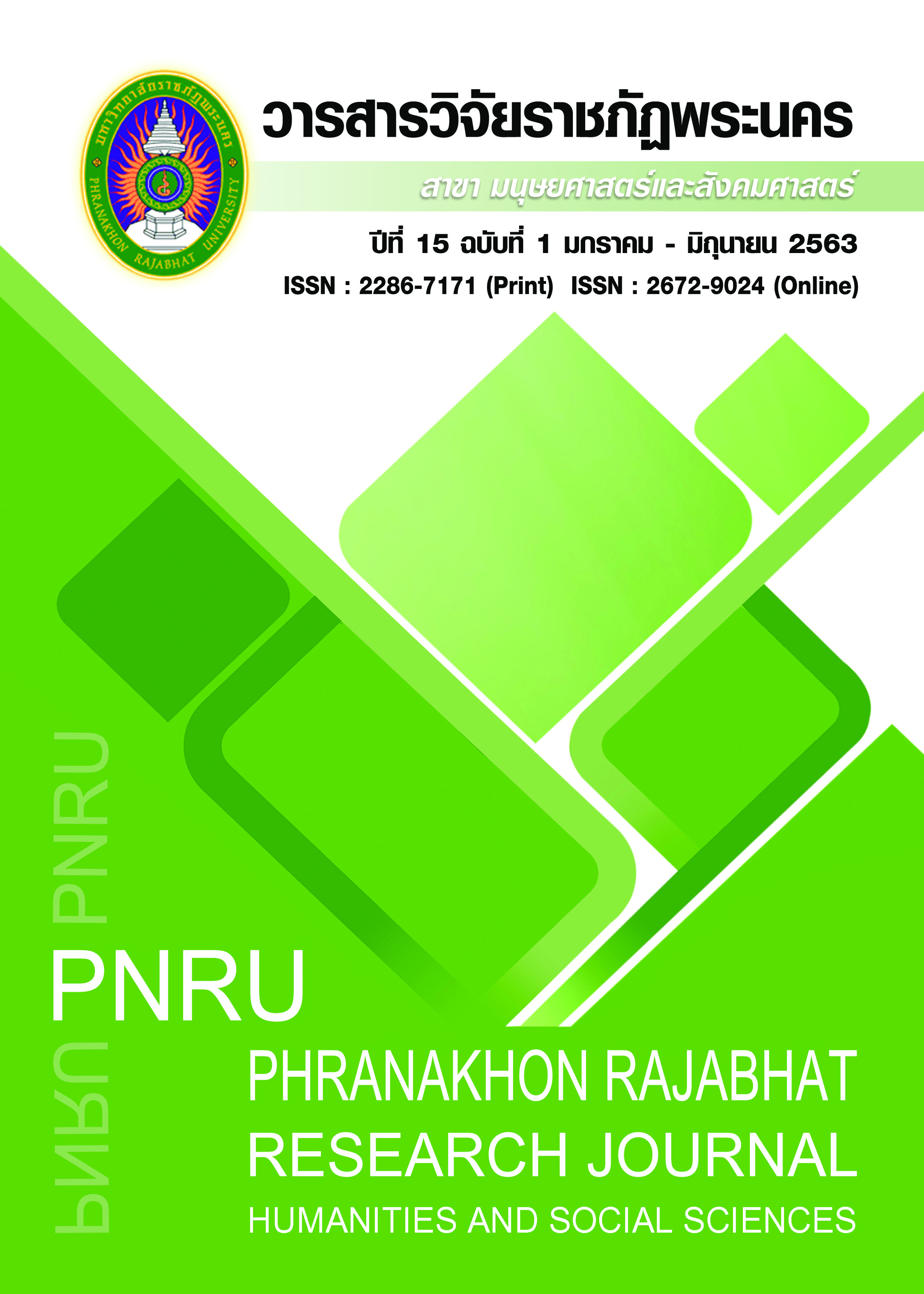INDIVIDUAL COUNSELING UTILIZING STABILIZATION TECHNIQUE FOR HELPING JUNIOR STUDENTS WHO WERE CYBERBULLIED
Main Article Content
Abstract
The purpose of this study was to examine 1) the situation of being Cyberbullied 2) Individual counseling using Stabilization techniques for students who were Cyberbullied. The qualitative research methodology was used. The participants were 499 junior school students in the academic year 2017, filled in the questionnaire for this study. Two students who experienced cyberbullied participated in 4 individual counseling sessions with stabilization techniques (Inner Safe Place, Inner Container, Light Stream Technique). The descriptive statistics (26.10) were utilized the data analysis. The results revealed that 1) One-hundred and thirty (26.10) of participants had experiences of Cyberbullied. Among 499 participants, one-hundred and one participant (20.20) received the rude message and threatened messages, which is the highest number among several types of Cyberbully. The impacts of Cyberbully affected in many areas, stress issues (16.80), nervous (14.00), and anxiety (13.20). In short, individual counseling with stabilization techniques could support students to enhance their coping skills toward being Cyberbullied properly.
Article Details
Each publish articles were copyright by Phranakorn Rajabhat University
Any contents which appeared in each articles in the journal were authors personal opinion. It did not relate to Phranakorn Rajabhat University and other instructors in the university. Each authors would take responsibility on their articles. If there are any mistake, the authors will take responsibility themselves
References
Amaraphibal, A. (2016). Cyber-bullying victimization among youths: Risk factor, mental health. Research Methodology & Cognitive Science. 14 (1), 59 – 73. (in Thai)
Archaphet, N. (2017). Cyberbullying: aggressive misbehavior and innovation for solution. The Journal of Social Communication Innovation. 5 (1), 100 – 106. (in Thai)
Brewer, G. & Kerslake, J. (2015). Cyberbullying, self-esteem, empathy and loneliness. Computer in Human Behavior. 48 (2015), 255-260.
Chao, H. J., Hou, L. C., Yueh, H. M., Ping, H. R., & Ling, C.Y. (2014). Positive affect predicting worker psychological response to cyber-bullying in the high-tech industry in Northern Taiwan. Computer in Human Behavior 30 (2014), 307-314.
Charoenwanit, S. (2017). Cyber bullying: impact and prevention in adolescents. Thai Science and Technology Journal. 25(4), 640 – 648. (in Thai)
Choompunuch, B. (2016). How to guide by avoiding cyberbullying. Journal of Education Khon Kaen University. 25(4), 21 – 27. (in Thai)
ETDA. (2017). Cyber threats 2016. Bangkok. Thailand Computer Emergency Response Team. (in Thai)
Jarutsantijit, S. (2106). Cyberbullying: if you love me, don’t bully me. Walailak Abode of Culture Journal. 17(1), 117 -137. (in Thai)
Samoh, N. (2013). Youth perception on cyberbullying. M.A. Medical and Health Social Sciences. Faculty of Social Sciences and Humanities, Mahidol University. (in Thai)
Sittichai, R. & Tudkuea, T. (2017). Cyberbullying behavior among youth in the three Southern border provinces. ASJ PSU. 28(1), 86-99. (in Thai)
Tabak, F. S. & Koymen. U. (2014). Students experiences with cyberbullying in Northern Cyprus. Procedia – Social and Behavioral Sciences 116 (2014), 5200-2209.
Tomsa, R., Jenaro, C., Campbell, M. & Neacsu, D. (2013). Student’s experiences with traditional bullying and cyberbullying: findings from a Romanian sample.” Procedia – Social and Behavioral Sciences 78 (2013), 586-590.
Tudkuea, T. & Sabaiying, M. (2017). Pattern, effects and coping with cyber bullying among students of a college in the Southern part of Thailand. Journal of Behavioral Science for Development (JBSD). 9(2), 220 – 236. (in Thai)
Wang, J., Iannotti, R. J. & Nansel, T. R. (2009). School bullying among adolescents in the United States: physical, verbal, relational, and cyber. Journal of Adolescent Health 45 (2009), 368–375.


